 |
 |
 |
| |
Barriers to uptake of pre-exposure prophylaxis among respondents to the Flash!
- PrEP in Europe survey
|
| |
| |
IAS: HIV Prevention at IAS 2017 - Jared Baeten, MD PhD Connie Celum, MD MPH University of Washington (08/14/17)
Prevention was front and center at this year's meeting - indeed, it was arguably perhaps the dominant area of conversation. The world continues to move forward with implementing antiretroviral treatment (ART) for all persons living with HIV infection, regardless of disease stage, as a prevention intervention, and pre-exposure prophylaxis (PrEP) as an option for HIV uninfected but at-risk persons. Neither ART nor PrEP have achieved their full potential, however, and implementation and coverage remain insufficient globally.
IAS: PrEP at IAS 2017 / IAS Coverage: New HIV & HCV Drugs, Fatty Liver in HIV - (08/11/17)
100+ reports....
IAS 2017: Conference on HIV Pathogenesis
Treatment and Prevention
Paris, France July 23-26 2017
-----------------------------------
Reported by Jules Levin
9th IAS Conference on HIV Science (IAS 2017), July 23-26, 2017, Paris
A. Bernier1, R.M. Delabre2, V. Schlegel2, A. Vilotitch3,4, S. Duken5, R. Stranz6, D. Rojas Castro2,7,8, K. Jonas9
Institutions
1Coalition Internationale Sida, Community-based Research Department, Pantin, France, 2AIDES, Community-based Research Department, Pantin, France, 3Aix Marseille Univ, INSERM, IRD, SESSTIM, Sciences Economiques & Sociales de la Sante & Traitement de l'Information Medicale, INSERM U912, Marseille, France, 4ORS PACA, Observatoire Regional de la Sante Provence-Alpes-Cote d'Azur, Marseille, France, 5University of Amsterdam, Psychology Department, Amsterdam, Netherlands, 6AIDES, Advocacy Department, Pantin, France, 7University of Lyon 2, Social Psychology Research Group (GRePS), Lyon, France, 8Aix Marseille Univ, INSERM, IRD, SESSTIM, Sciences Economiques & Sociales de la Sante & Traitement de l'Information Medicale, Marseille, France, 9Maastricht University, Work and Social Psychology Department, Maastricht, Netherlands
Background: Pre-exposure prophylaxis (PrEP) has been shown to effectively reduce HIV infection risk and is recommended by the World Health Organisation (2015) and the European AIDS Clinical Society (2015). As of January 2017, only two European countries, France and Norway, have authorized prescription and reimbursement of PrEP. In this analysis we identify potential barriers to PrEP uptake across Europe.
Methods: The Flash! PrEP in Europe (FPIE) online survey was a community-based research study aiming to assess interest in and barriers to PrEP uptake amongst respondents from 11 European countries. Data was collected from June to July 2016. Respondents were ≥18 years old and self-reported HIV-negative or unaware of their serological status. A 5-point Likert scale was used to assess potential PrEP uptake barriers, responses were dichotomized (Yes, probably/ Yes, definitely vs Maybe/ No, probably/ No, definitely). To assess barriers amongst different groups, and due to high response rate from Germany, four groups were analyzed separately: German men (GM), other European men (OEM), women and transgender men and women (TMW).
Results: Of 15 461 respondents, there were 10 288 GM, 4201 OEM, 690 women, 245 TMW and 37 did not provide gender information. Among the 10 833 (72.7%) respondents potentially interested in PrEP, the greatest potential barriers were fear of side effects (GM: 53.6%, OEM: 39.0%, women: 55.8%, TMW: 40.0%) and necessary hospital visits for PrEP (GM: 49.1%, OEM: 27.3%, women: 33.0%, TMW: 35.7%). Among respondents not interested in PrEP, a majority (>64% in each group) did not want to take PrEP daily, feared side effects or did not feel the need to change their protection strategy. Fear of getting other sexually transmitted infections (STI) was also predominant particularly among GM (72.8%).
Conclusions:FPIE results highlight high interest but widespread knowledge gaps in relation to PrEP use among potential users. Improved communication on PrEP, including regular STI testing, follow-up for side effects, possibility of event-driven regimen and facilitating PrEP access, may help address some barriers. Better understanding of PrEP uptake barriers may help inform public health policies which meet the needs of at-risk populations.
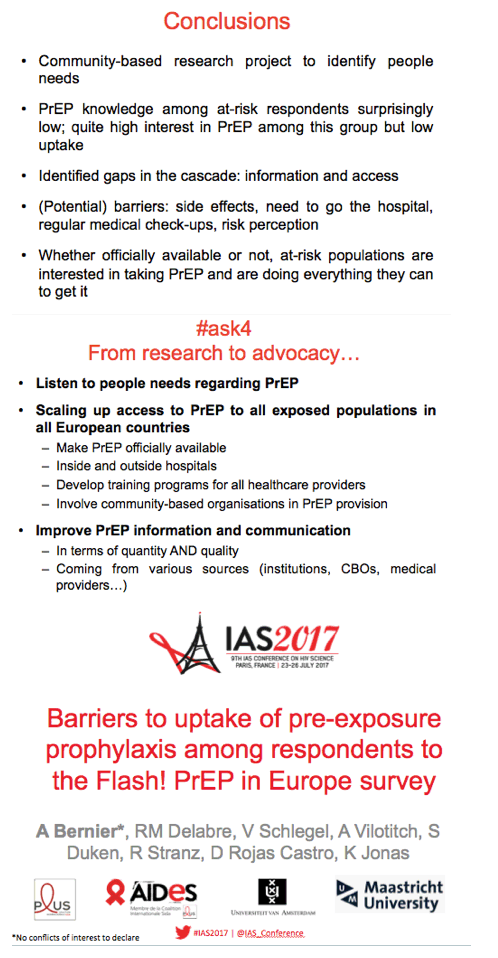
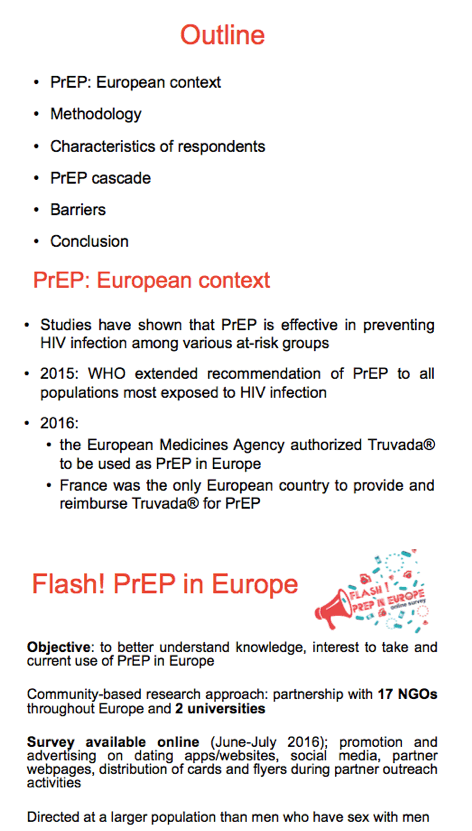
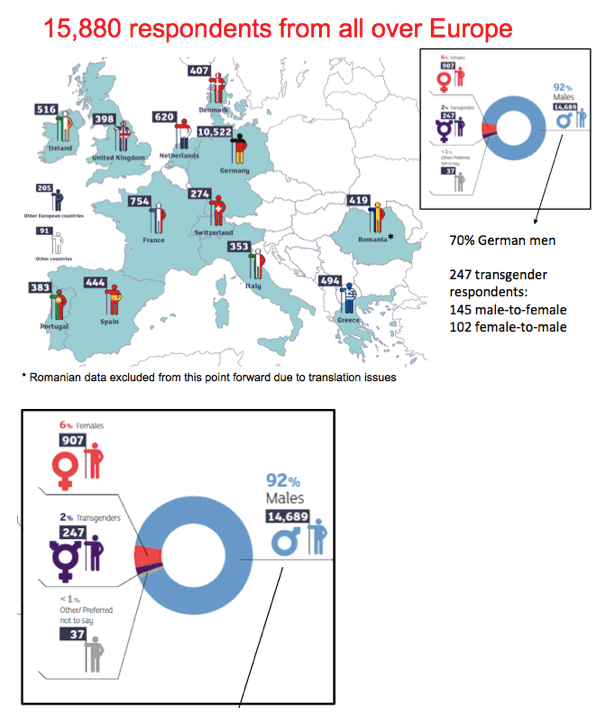
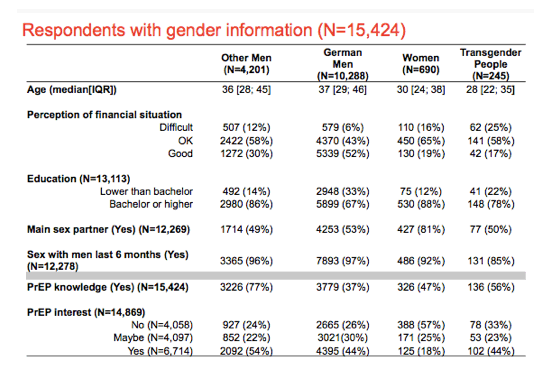
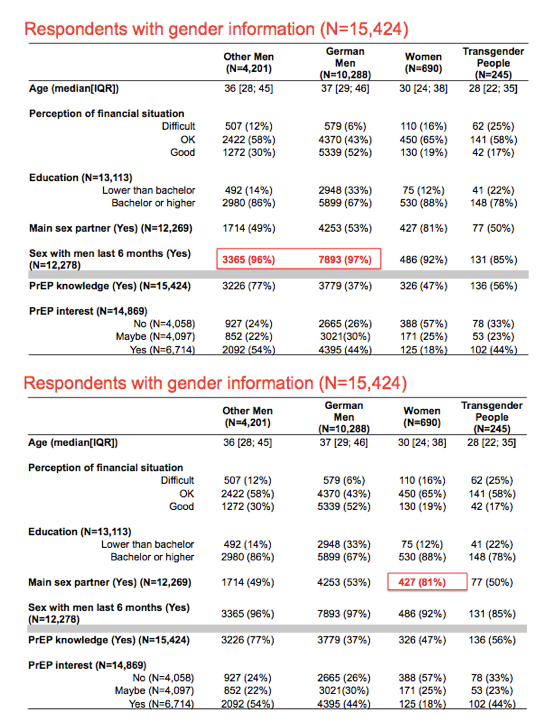
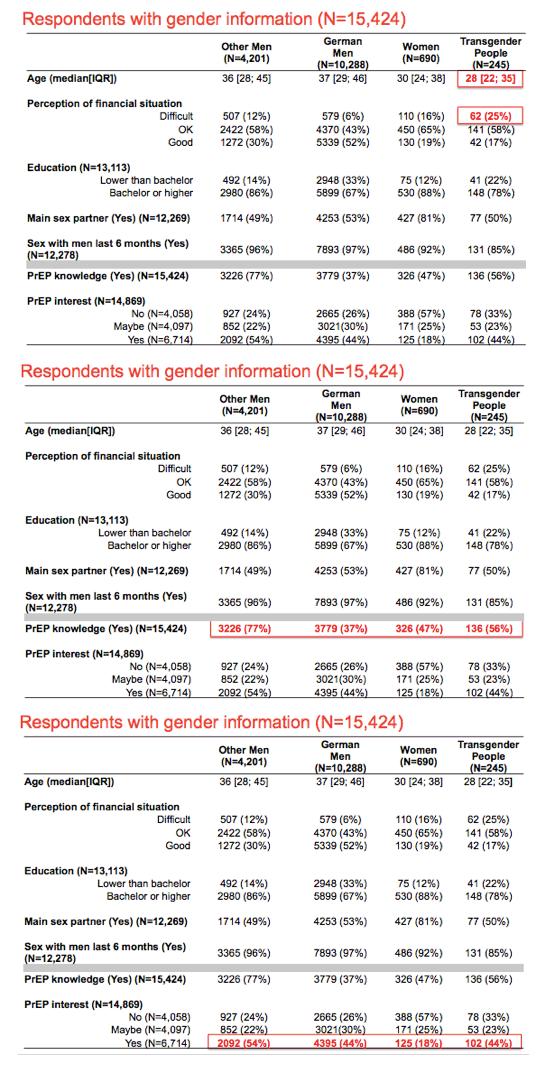
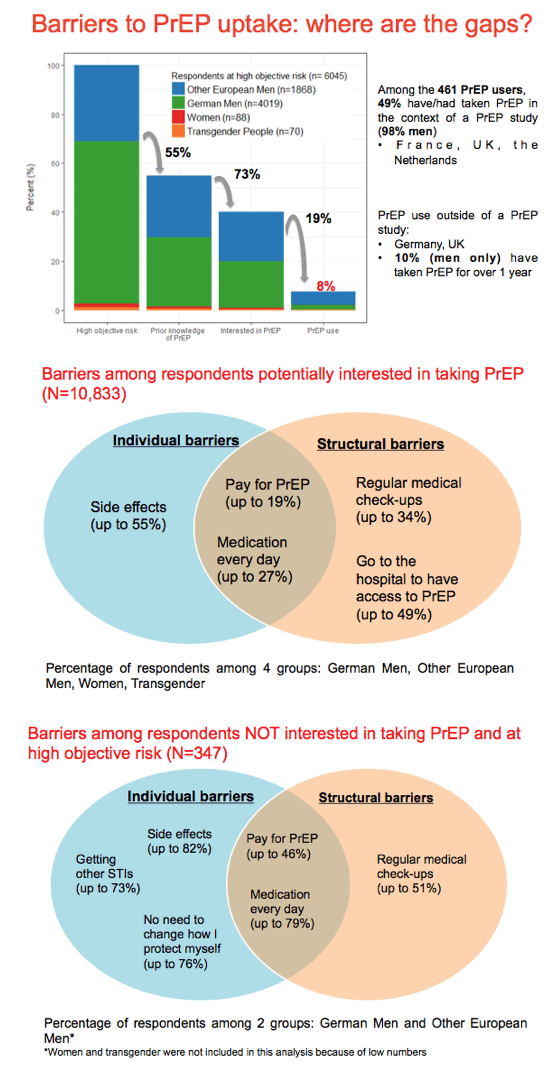
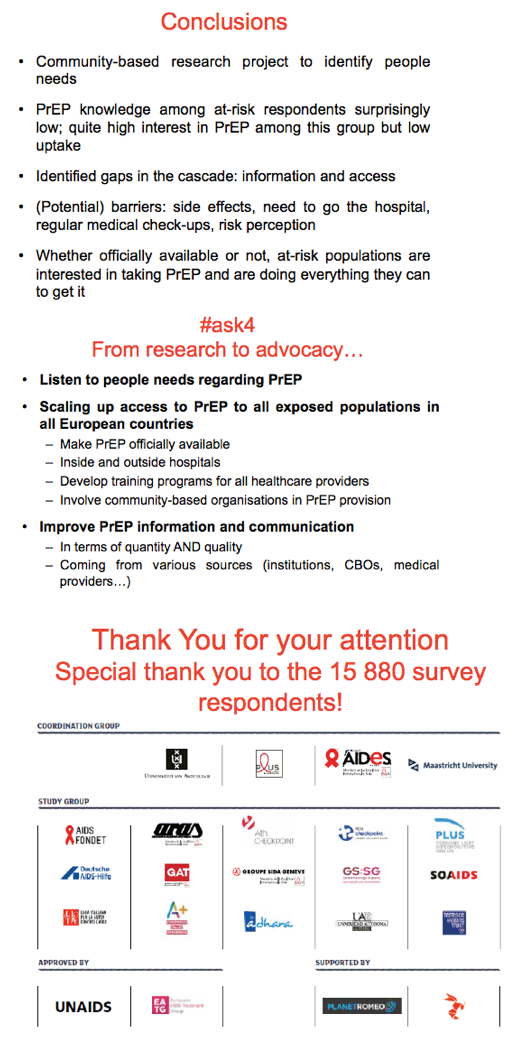
|
| |
|
 |
 |
|
|